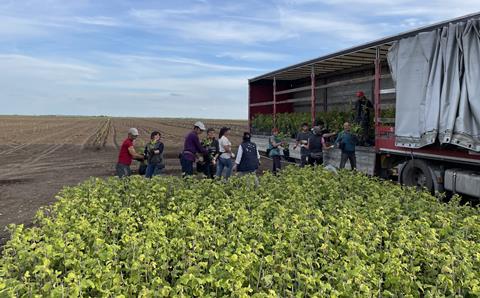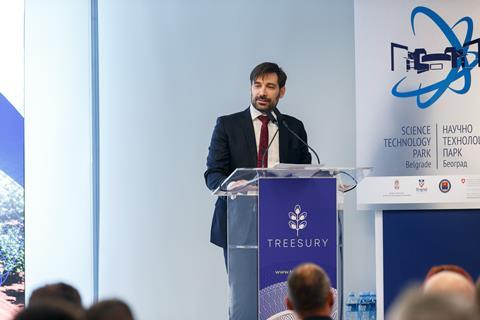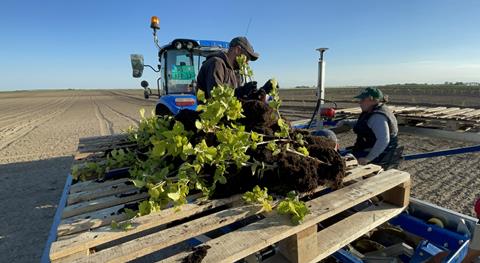Serbian fintech company Treesury is enabling small investors to generate income from long-term investment in hazelnut cultivation, with potential for other products such as berries and tomatoes

Over the past decade, Serbian hazelnut cultivation has experienced intensive development, with significant demand driven primarily by Ferrero’s strong presence and partnership with local producers, as well as subsidies provided by the Serbian Ministry of Agriculture. Since 2021, hazelnut exports from Serbia have nearly tripled.
Production in Serbia is characterised both by the disappearance of old, extensive orchards and the establishment of new plantations featuring top Italian cultivars, irrigation systems and advanced cultivation technology.
Hazelnuts have quickly become a focus of interest for both large and small investors. Founded in Serbia, fintech company Treesury has organised its own advanced hazelnut production while simultaneously enabling small investors to generate passive income from long-term investment in hazelnut cultivation.
Treesury recently issued its first series of tokens for establishing smart and sustainable hazelnut production on the fertile fields of northern Serbia, as director Jovan Paunović explains.
Can you tell us how this model works and what advantages it offers compared to traditional agricultural investments?
Jovan Paunović: Agricultural financing is a global problem. Europe faces an annual shortfall of around US$67bn, while Africa needs over US$100bn. Banks aren’t motivated to develop products tailored to agriculture, and traditional capital markets in our region remain underdeveloped. On the flip side, investors have very limited options for putting their capital to work. Real estate dominates investments, but in most cases it’s not a passive investment – it requires active involvement in finding tenants and maintaining properties. Additionally, investors have bank deposits available, with interest rates that don’t even keep pace with annual inflation. Investment funds have emerged recently, but most are characterised by costly exit fees and penalties for early withdrawal.
Following the pandemic and geopolitical crises, agriculture has proven an excellent investment option. However, only 3 per cent of investors choose this industry due to the need for substantial capital, lack of transparency and traditional illiquidity. Moreover, for most investors, agriculture is a complex and unfamiliar field.
The Treesury model removes all these barriers. Through blockchain technology, we ensure complete transparency, and large projects are divided into small units (digital tokens) accessible to anyone from around €100. At the same time, the plantation is managed by a professional, multidisciplinary team, so investors don’t need any expertise – they’re making a truly passive investment. The key advantage is liquidity – investors can sell tokens on a secondary exchange. Each token is a regulated financial instrument with all necessary approvals, while stability rests on long-term contracts with major international buyers.
Are there similar examples in Europe or worldwide? What sets you apart from comparable initiatives?
Globally, we see various tokenisation models – from commodities in Latin America to coffee trees in Africa. Similar projects have emerged in Serbia, but there are fundamental differences.
Treesury uses the most advanced global standard, ERC3643, aligned with capital market regulations in 180 jurisdictions. This allows investors to prove eligibility without publicly disclosing personal data, while regulators gain oversight without compromising privacy. This institutional-grade standardisation provides global trust and opens doors to listing on the most developed blockchain exchanges.
The second pillar is production optimisation using cutting-edge technologies – smart sensors, drones, satellites, hyperspectral cameras, machine learning and artificial intelligence – combined with regenerative agriculture methodologies. We collaborate with the BioSense Institute, the Fruit Research Institute in Čačak and international associations from the Netherlands, Italy, Chile and the US.
The third pillar is integration into global supply chains through long-term contracts with major industrial buyers. These three pillars meet the criteria of institutional investors, paving the way for intensive market development and liquidity.

Was it challenging to break through with this idea?
The path to realisation was definitely not straightforward. Initially, we faced understandable confusion, as many advisors didn’t grasp that agriculture’s unique nature requires a holistic approach – you can’t address financing or digitalisation in isolation.
The project has received support from the Innovation Fund through EU pre-accession funds, the World Bank’s Catapult accelerator, the EBRD, and has been presented by the ERC-3643 Association as a best practice case for tokenisation in agriculture.
Collaboration with the Securities Commission has been excellent – they have a constructive and proactive stance. We’ve also had good cooperation with the National Bank of Serbia (NBS) regarding enabling purchases by non-residents. Serbia is one of the first countries to legally regulate digital assets, which provides a solid foundation and stimulus for the economy.
However, we have encountered, and continue to face, administrative challenges, such as more efficient land registration in the cadastre, faster obtainment of international identifiers for tokenised instruments, and the like.
For the entire system to be sustainable and profitable, you mentioned that one of the core pillars is professional and efficient plantation management. How do you ensure this?
Our team of 12 agronomists possesses decades of experience from establishing over 10,000ha in Serbia and abroad. Over 25 years in the hazelnut industry, we’ve developed our own methodology that achieves 30-50 per cent better yields than industry standards. With advances in AI technology, we’re probably learning faster than ever before.
Modern technologies enable us to analyse data in contexts that were previously impossible. Additionally, we certify plantations for carbon credit production, which represents an additional revenue stream. Sales are directed toward major industrial buyers who demand the highest quality and offer premium purchase prices.
We’ve developed a comprehensive risk management plan, where plantation insurance is key, covering both biological assets and yields.
How would you describe the returns and profit distribution structure?
The commercial lifespan of a hazelnut tree is 40 years, with the first harvest coming in year five. The plantation becomes self-sustaining from year six, while full return on investment comes between years nine and ten. The expected average annual returns for the first Treesury token issuance are between 12-15 per cent over the tree’s 40-year lifespan.
The token is structured as a green bond – investors have priority rights to principal repayment, after which profits are split fifty-fifty with the Treesury company until the end of the tree’s life. The fact that we only profit after the investor recovers their principal speaks volumes about our confidence in the model’s sustainability.
How are you positioning yourselves in the global hazelnut market?
The hazelnut market shows positive trends – demand exceeds supply, with growth expected from US$17.7bn in 2023 to US$41.1 bn by 2033. Turkey dominates with 60-80 per cent of world production, but due to dependence on natural conditions, major buyers like Ferrero, Nestlé and Mondelez are investing heavily in other regions. Serbia is one of Ferrero’s priority partners.
We’re positioning ourselves as a major producer of premium quality, focused on international industrial buyers in the confectionery and pastry industries who pay premium prices for superior quality.
What are your plans for the future?
Our priority is expanding hazelnut plantings. The goal is to become the largest European producer within the next few years. The next step is collaboration with proven producers of other crops – sugar beet, malting barley, blueberries, raspberries, tomatoes, peppers. We’re enabling investors to diversify their portfolios while providing producers with access to capital on more favourable terms, support in implementing modern technologies and long-term purchase contracts. In the longer term, the goal is expansion to other continents for complete geographical diversification.




